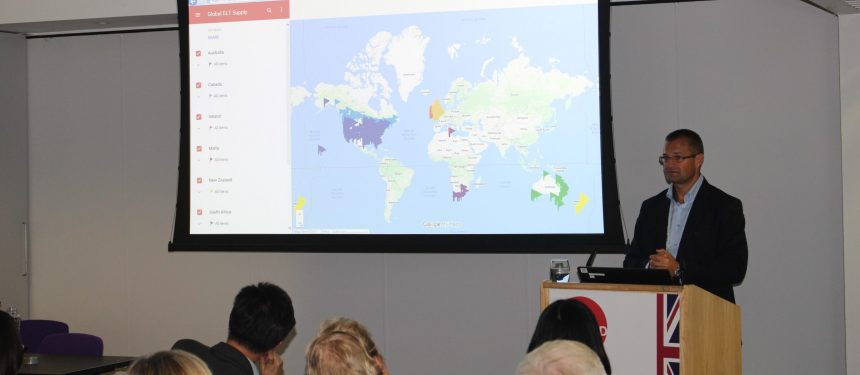Australia has surpassed the UK in terms of the number of student weeks for ELT study, according to data from StudentMarketing, which found that the total number of student weeks in the UK fell to 2.2 million last year.
News and business analysis for Professionals in International Education
Have some pie!
Australia surpasses the UK in ELT student weeks
 In the UK, there are 1,017 centres, which amount to an average of 2,196 student weeks and 593 students per centre. Photo: The PIE News
In the UK, there are 1,017 centres, which amount to an average of 2,196 student weeks and 593 students per centre. Photo: The PIE News Recent English Australia data, meanwhile, shows that the number of student weeks hit 2,319,175 last year.
According to StudentMarketing, the UK’s reliance on short-term and decreasing markets, mainly in Europe, is contributing to its decline in student weeks, while the success of Australia can be attributed to recruitment from long-term and growing markets, mostly in Asia.
“It’s a good year for the UK because of the exchange rate mostly”
However, early indications suggest that the UK’s ELT sector is on the right track to bounce back, albeit slightly, from the 2016 declines, in part due to the sterling’s low exchange rate.
Of the 1,375,473 million internationally mobile English language students, the UK has 39.8% of the global ELT market share, according to StudentMarketing.
But with worldwide demand for ELT shrinking, the sector is oversupplied, particularly in the UK, said Samuel Vetrak, CEO of StudentMarketing, at StudyWorld this week.
In the UK, 1,017 centres welcome internationally mobile learners, amounting to an average of 2,196 student weeks and 593 students per centre, according to StudentMarketing.
But, “Australia is doing the best,” said Vetrak. “There are 280 centres with a similar number of student weeks that the UK has.”
The US, Australia and Canada have the longest length of stays for ELT students, according to the data, attributing to the growth in the number of overall student weeks.
“The UK is not only decreasing in the number of students, but also the length of stay, ergo the overall number of student weeks,” said Vetrak.
This, he added, is due to dependency on shorter stay markets mainly in Europe that are showing a downturn in demand. English UK data shows Italy and Spain were the top sending countries to the UK last year.
Competing markets like Australia and Canada, meanwhile, having a greater proportion of students from longer-stay and growing markets in Asia.
Early data for this year, based on a representative sample of 124 UK language centres participating in English UK’s Quarterly Intelligence Cohort scheme, provides some respite with Q1 and Q2 results showing there were over 325,000 student weeks in the first half of the year.
However, it is important to be cautious about the sustainability of this growth, said Vetrak.
“It’s a good year for the UK because of the exchange rate mostly,” he said.
“The success is mostly built on the short-term change of the exchange rate and the market follows that very quickly.”
Australia’s success, Vetrak said, is based on a variety of factors, including positive politics, trade missions overseas, and positive communication disseminated abroad.
The UK is still the top ELT destination by a large margin – over 300,000 students ahead of the US – but numbers are falling with the UK losing on average 50,000 [ELT] students for the last two years, noted Vetrak.
“The global demand for ELT is already decreasing”
“It’s rapidly decreasing when it comes to student numbers,” he said. “2017 is a better year, we will get there, but it will be difficult to get the same levels… especially in an environment when you put all these numbers together in the last six years. The global demand for ELT is already decreasing.”
Institutions will need to respond to a shift towards a growing junior market, advised Vetrak, with data indicating they now make up 51% of student numbers in the UK. This is a significant increase from four years ago, where junior numbers accounted for just over a third (34%).
Centres should adapt their portfolios and products more towards younger learners, Vetrak counselled, while still speaking the language of their parents.
Multiple sales and packages and retaining repeat customers are also more possible than before because of this, he added.
“If you were selling mostly to people aged between 20-28 – the main target group but decreasing – they were at the end of the purchasing chain,” Vetrak said.
Still looking? Find by category:


